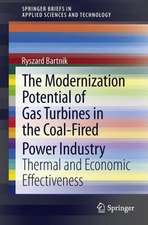Theoretical Analysis of High Fuel Utilizing Solid Oxide Fuel Cells
Autor Pedro Nehteren Limba Engleză Paperback – 31 oct 2008
Preț: 272.31 lei
Preț vechi: 353.34 lei
-23% Nou
Puncte Express: 408
Preț estimativ în valută:
52.11€ • 54.40$ • 43.12£
52.11€ • 54.40$ • 43.12£
Carte disponibilă
Livrare economică 15-29 martie
Preluare comenzi: 021 569.72.76
Specificații
ISBN-13: 9781606920114
ISBN-10: 1606920111
Pagini: 54
Ilustrații: tables, charts & illus
Dimensiuni: 155 x 226 x 5 mm
Greutate: 0.12 kg
Editura: Nova Science Publishers Inc
ISBN-10: 1606920111
Pagini: 54
Ilustrații: tables, charts & illus
Dimensiuni: 155 x 226 x 5 mm
Greutate: 0.12 kg
Editura: Nova Science Publishers Inc
Cuprins
Preface; Introduction; Analytical Solution of the Current Distribution; Numerical Solution of the Current Distribution; Nickel Oxide Formation at the Anode; High Fuel Utilising SOFC; Conclusion.






















